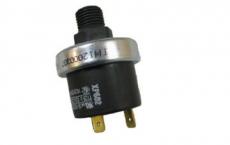Misconceptions about wells - eyes of builders. Physical properties of water. Effective methods of cleaning
The quality of water depends to a large extent on where it came from. In the uppermost aquifer, which is located above the first waterproof layer, groundwater accumulates. They contain a large amount of impurities. To drink this water is considered not suitable, and even for technical purposes it is not desirable to use it.
Since the rocks lie in layers, alternating waterproof and water-permeable layers occur. Aquifers, which lie between the water-resistant layers, are called interplastic layers. The water below it is in most cases suitable for drinking and has a fairly stable chemical composition.
Wells usually break through to the first interplastic aquifer. The depth of occurrence can be very different and it is difficult to predict. An approximate depth can be learned by talking to neighbors who have wells. But the exact results will be known only after drilling.
In some aquifers, water is under pressure. The water from them may well rise to a considerable height, to the surface and even be filled with a fountain. Such water is called pressure or artesian. The water in the artesian wells and boreholes is very clean, but the pressure underground water usually lies quite deep. It is believed that artesian water there are almost everywhere, at least in the European part of Russia, but here the depth can be from 20 to 1000 meters.
If the depth of the aquifer is more than 10 - 15 meters, digging the well is too time-consuming. A much more effective solution will be a well. Wells for water are divided into "wells on sand" depth of 15 - 35 meters and "wells on limestone" - deeper, up to 200 or more meters. Since at this depth there are often meteoric groundwater, all wells on limestone are often called artesian.
Chemical composition of water from a well or from a well
Accurate data on whether water is suitable for drinking, can only give a laboratory analysis. At the same time, such indicators as general mineralization, bacteriological state and quantity of microelements are investigated, and even radiation safety indicators are estimated. Only by the sum of the indicators can we conclude on the quality of water.
Water in a well or well can change its composition
The chemical composition of the water in the well, as well as in the well, can change with time, both in the best for the human side, and in the worst. The reason for the change can be both natural factors and human activities. For example, if you have a well drilled near you and there is a flow between different aquifers, the composition of the water in your well is likely to change. If the well is done poorly, dirty water from the upper aquifers can also negatively affect the composition and properties of the water from the well.
Table 1.
Signs of changes in the chemical composition of water.
|
Qualitative changes in the composition of water |
Possible reasons |
What to do |
|
An increase in the concentration of compounds such as chlorides, sulphates and dissolved iron. Increased mineralization and water hardness. |
Surface and groundwater entering from water bodies or quarries. Another likely source of pollution is a running sewage system, cesspools and landfills |
Will help either eliminate sources of pollution or install a water purification system. |
|
Increase in the concentration of compounds containing nitrogen and biological impurities |
A typical cause is the entry of sewerage and drainage water, fertilizers into the aquifer, etc. As the ways of entering, abandoned mines, boreholes and quarries. Another way is pollution surface watersoomes. |
Elimination of foci of contamination, which is not always possible. Disinfection of water, the cheapest option - chlorination, it is possible to use complex cleaning systems. |
|
Water changes color, transparency decreases, after sedimentation a reddish precipitate may fall out. There may be an unpleasant aftertaste and smell. There is an increase in water hardness. |
A typical reason is that water enters the aquifer from marshes with a high content of sulfur pyrite and peat bogs. |
Measures to drain the swamp will not be offered, it is too resource-intensive solution for an individual. Drill a new well, deeper, it is possible, but the costs will be significant. It is much cheaper to install a reliable filter. |
|
Increase in the amount of mineral substances in water |
In this case, it is most likely that the lower or adjacent water horizons are mixed with water. This mixing is possible because of the very large water intake. |
As a solution, you can offer to reduce consumption, if it is unacceptable - then filter from the excess of minerals. |
Therefore, if the organoleptic properties of water, that is, its color, smell or taste, change, it makes sense to conduct a chemical analysis. This will help to respond in a timely manner with a deterioration in water quality.
Some specialists involved in drilling wells recommend water analysis from the well regularly, every two to three months. Although this approach can significantly increase the cost of water supply.
Video about the features of the water from the well. It is very different and to understand if it is necessary to clean it, it makes sense to do the analysis.
Clay well - water from clay.
The well is built from the beginning to the end in clay. The easiest in the construction of a well. The aquifers are in clay and are considered the cleanest waters. They occur at a depth of 4 to 20 m. Sometimes customers are reluctant to accept such wells, due to the slow flow of water. It is necessary to understand that a young clay well at the beginning gives little water, but over time, water dilutes the springs that have opened and the water flow into the well will increase several times. Rocking a well - this concept applies only to clay wells.
Clay well - water from clay quicksand.
A complex well in construction. An even trunk at the well is rarely obtained. Usually the depth of these wells does not exceed 10 rings. In such wells, the lower ring is clogged with clay quicksand. This fact does not give rest to the owners - wells are constantly cleaned, trying to deepen, pumping - all this makes no sense. You need to understand and know how to use such wells.
Take water very carefully. If you, for example: 3 rings of water, lower the pump by 2 rings down, the bottom 1 ring should remain in a state of rest. To pump such wells (to pump out water completely) - it is impossible!
Clay well - water from sand.
A complex well in construction. Correctly constructed well in quicksand is rare. In such wells, water arrives very quickly. The lower ring is tightened with quicksand and this is normal. The water level in such wells rarely exceeds 1.5 meters. A water column of 1.1 m in this well is considered the norm. To pump a well (completely to pump out water) - it is impossible! An attempt to pump water in such a well can result in the water becoming muddy in the well. The worst is more developed - the sandy bottom will rise, and where there was water, there will be sand.
Clay well - water from a stone.
A complex well in construction. In the stony ground, the ring clamps even in a strong brigade. The water column in such wells does not exceed 70-80 cm.
Sand well - water from sand (quicksand).
The most difficult well in construction. The shaft of the well is completely built up to the end in the sand. Approximately 80% of all sand wells are not dug up. Rings rise as soon as they go into the wet sand. Without a certain knowledge and skills, a well can not be built. The purity of water in the wells depends on the quality of the sand in the aquifer. To pump a well (completely to pump out water) it is impossible! 1.2 m - a column of water in such a well is considered the norm.
A swampy well is water from peat.
A complex well in construction. The difficulty lies in the fact that wet sand and peat firmly hold the concrete rings and do not allow them to be deposited on the bottom. The water from the peat has a brown tint, it is soft, without scale. Many people are disgusted with such water. In spite of everything, the water in such wells is considered to be drinking water. In some peat wells, water is high, just below ground level. There is a danger that in winter, the upper ring can be raised by frost, and in the spring, thawed waters and mud get into the formed gap. To prevent the ring from freezing, it is necessary: wrap the ring with film and raise the soil around the well by 30-50 cm.
The main and the most difficult in the construction of a well is a cumulative part of the well.
Wells only at first glance may seem the same. Even if they are built five meters apart, they can differ: depth and water level.
How to determine the depth of a well?
This question is asked very often by people before ordering the construction of a well. The answer to it is simple - to define well depth it is possible only in the process of work, that is, immediately after the well has been excavated. It is possible to determine approximately the depth of the well in the process hydrogeological surveys on the site, but no one will give you an exact guarantee that the well will be of such a certain depth. Depth of well depends not on the human factor, but on the depths occurrence of the first aquifer.
What is quicksand?
Quicksand Is the mass of finely divided pulverized particles saturated with moisture to the state of a dough-like mass. Often meet layers quicksandvarious thicknesses, which greatly hamper the digging of the well. Pass the quicksand in the process of digging it is very difficult and requires extraordinary efforts, but there are also certain advantages in this type of soil layers. This dignity quicksand is that it is a fairly good water supply.
Which is better: a well or a well?
It is impossible to give a single-valued answer to this question. All depends on many factors. The key factors, of course, are the hydrogeological conditions of the site and the water quality of the first aquifer. As a rule, in our strip in the first aquifer fairly pure water flows, quite suitable for drinking and even more so for technical needs. The well can also be drilled deep enough to reach the second and even the third aquifer, which guarantees the purity and quality of the water. However, drilling is quite expensive, which together with equipment for extracting water from the well is a considerable amount. Therefore, it is more convenient to arrange wells, and not boreholes.
How to clean the well?
Do not be afraid that after welldug it will have to constantly. In fact, a serious blockage wellssilt - this is a fairly rare phenomenon, which is easily solved by professionals. Self-management of serious pollution is almost impossible.
Why not increase the water column in the well?
The depth of the well and the height of the water column in the well are not determined by your or our desire, but by the hydrogeological conditions of the site where the well is being constructed. The main hydrogeological conditions are the depth at which the first aquifer lies and the amount of water inflow in this horizon. This means that the depth of the well will be equal to the depth of the aquifer with the addition of two or three rings that will be installed directly in it. The number of these rings is determined by the force of the inflow of water. If the water comes very slowly, then set in the horizon, as a rule, the maximum number - three rings. If the water arrives so quickly that it does not have time to pump out the pump, one can easily manage with one single ring.
Why is the ring of the well not put on the solution, as it is done when laying walls of brick or block?
Many years of experience in the construction of wells has shown us that by building a well with casing and installing each ring on a solution, we mostly get a well with a curvature of the trunk. This phenomenon can be explained very easily. Cement ties between individual rings can not be kept in the process of digging, since the common column, during the entire time of penetration is in constant motion, which makes certain minor displacements of the rings in relation to each other unavoidable. Even the minimal horizontal and vertical deformations of the column shape destroyed the mortar between the rings. That is why it is pointless and inexpedient to make seaming up to the moment when the well's trunk finally takes a stable stationary position. Seams between the rings after the installation of the well's shaft are sealed only from the inside.
When is it better to dig a well?
There is a widespread opinion that building wellneed in winter. As it often happens, the most common opinion is not always the right one. In fact, the time limits in the case construction of wells no. The only time period in which to refrain from building a wellIs the time of melting snow and ice in the spring. At this time it is very difficult to produce work because of rising groundwater levels.
How to protect your well from surface water?
There are cases when in winter due to severe frosts the upper ring breaks off and a gap is formed between the first and second ring. In spring all the muddy water, and not only, gets into the well. In order to avoid this, after the construction of the well, clay lock.
Clay castle.
This protection of the well from direct entry into it of perch, carrying with it fertilizers from the soil, animal products, insects, ...
Formation of a "young" well.
When you dig a well, the mine digs up to the possibility, then rings fall into it. Between the rings and the cavity shaft there is a gap of approximately 2 - 4 cm (in a circle). After flood or heavy rains, the soil around the well settles, dips are formed 20 - 50 cm. Water in the well will become turbid - this is an inevitable and natural process, we call it the formation of a well. Approximate dates forming a well 7 - 8 months. The well during his forming You can use it, only the pump should not be lowered to the bottom, and you can not pump the water to the end.
After forming a well you need to clean the well, seal up the seams and install the bottom filter, the approximate cost of these works in the place with the material is 11,000 rubles.
(24 pages) for the construction of a well and water supply schemes in the house. (PDF)
- There must be drinking water in the well.
"Drinking water" is a concrete and definite concept. "Drinking water" is water that meets the requirements of GOST 2874-82 and SanPiN 4630-88. If you run the risk of drinking water with indeterminate characteristics, this does not mean that it is drinking. Many may seem strange, but water that does not have taste, smell and transparent can be contraindicated to consumption for many reasons. The quality of the water in the well depends solely and only on the aquifer from which the well feeds. Unequivocally, we can say that when performing work, builders, or in any way, can not affect the quality of water in the well. It does not depend on them. Therefore, most builders of wells do not guarantee water quality in the well. Based on our practice, we can state that the water in the wells can meet the requirements of the corresponding GOST and SanPin (within a small number of indicators), or maybe not.
Some environmentalists say that in the near Moscow region drinking water at
there are no upper horizons at all, and all water used for household and household
Consumption should be cleaned and conditioned.
- The well must be built deep in as many meters.
Debit and debit are completely different concepts. The first you should tell all the familiar accountant, and the second - a well master or reference literature. The flow rate of the drinking well is the volume of water that stably comes from the water carrier per unit time. Can be measured in different quantities: liter / second, cubic / second or simply by rings. The productivity of the well can become a real headache for the owner already at the planning stage of the well. What if there is not enough water? What if the well becomes shallow? And so on and in different variations.
The flow rate of the drinking well depends on various factors: the depth maps of the aquifers, from which water the well has been drained, in which soil the bottom has been formed, there is at the bottom of the quicksand, where the water comes from, the diameter of the pipes or rings of the shaft. One aquifer can give only 1-1.5 rings of water, but it is impossible to deflate it because of the rapid inflow, the other - literally squeeze out by drop and fill the well with several rings.
What to expect from a drinking well
Well on the backyard or suburban area Is a strategic object. Usually it is laid in the first place, so that by the beginning of construction, provide yourself with a sufficient amount of water. And at the stage of exploitation, the owner can find out that his well is not bottomless, and it can be fully emptied and then wait until the water is dialed again, or to bring additional water.
Well well differs, even if they are in neighboring areas. To learn the detailed structure of the location of layers of rocks, only prospecting drilling will help, and for him simple well usually do not because of the high cost. A team of builders can guarantee that they will dig a quality well according to all rules, but they are immune to neither the chemical composition of the water nor the depth of the aquifers.
The ideal case for the organization of water supply is the balance between the volumes of water intake and the inflow of water into the well. That is, theoretically, it will not work out. Such wells are not so common. They often feed from underground rivers, lakes or springs that provide a rapid inflow
The desired level of water in the drinking well is 2-3 reinforced concrete rings of standard size. One ring holds about 800 liters of water. The volume is sufficient for maintenance big house with amenities and watering the site. The recommended maximum fence is 500 liters / hour.
If you plan to fill large tanks from a well: an artificial pond or a swimming pool, you need to do this gradually, without salvo pumping out the entire water column. Wells react poorly to severe drainage, the restoration of the level can take several days. In addition, water quality can deteriorate significantly, it becomes cloudy, dirty (another aquifer may break through).
What does the well rate depend on?
The collected moisture is restored unevenly in the well, the higher the water column, the slower it will rise. By filling, the wells are divided into four types:
- Spring or key;
- Accumulative;
- River;
- Artesian.
Well on the spring - it's delicious water, which beats the key. They are filled up actively, but at a small height. The storage well has a larger capacity. It is filled not only through the bottom, but also through special holes in the rings. Therefore, when the mine is mined, it is necessary to observe the state of the side walls so as not to cut off the fontanell rings. In the beginning, water will come from them, then they will become denser, silt and find another way. To fix the situation in solid rings, make perforations and fill the holes with a mixture of mortar and expanded clay, which will act as a filter, not passing only water.
The storage wells are filled slowly. To ensure a sufficient amount of water they do more depth, and the mine serves as an additional capacity. Standby groove not always appropriate, there is a risk of opening an anhydrous crevice horizon of granite or clay clay, and all the water will go into it.
The ancient masters of well work knew about the possibility of water inflow from the side walls of the mine. In the wells with wooden logs, the lower part of the logs was not laid tightly, and the smooth expansion of the bottom made it possible to accumulate more water than the narrow mines of modern wells
River wells are provided with a maximum of productivity. When they dig, the channel of an underground reservoir opens, which lies between two water-resistant layers. The height of the pillar here plays a secondary role, and can be small - 1-1.5 meters. The water is supplied by a free inflow without pressure.
The three described types of the well are subject to seasonal fluctuations in the level. The maximum is observed in spring and in rainy autumn, when the soil is saturated with atmospheric precipitation. Water begins to soak down, filtering through layers of clay, sand and limestone. True, between a shower and an increase in the flow rate of a well, weeks and months can pass. One in five squeeze well dries up in winter and summer, that is, the seasonal debit is 0.
In the summer, such wells become shallow due to lack of water make-up and active water intake. After evacuating "dry" the water level will be very long to recover, in the worst case - generally it will go away.
The most stable yield artesian wells. They feed from interplastic horizons, which are under pressure. It is almost impossible to empty such a well.
Correct arrangement of well bottom helps to reduce the seasonal fluctuation of water inflow. Well, if after the opening of the aquifer, it managed to pass and lean the rings on waterproof rocks. Such a well is called perfect, it feeds from the entire formation, and does not draw on the top. If the aquifer was only opened during the digging and stopped further work, during the drought such a well will quickly become scarce, it may even have to be deepened.
Better than perfect design is a perfect well with a sump. This is when the shaft passes through the aquifer and deepens a few more meters. Thus, the water will flow down and down, further filling several rings.
Sand and clay - where is more water?
Sandy soils easily give water, but the pole above 3 meters is a rarity. It is compensated by a good debit. In a large fraction of sand, filling with water occurs instantly. The exception is silty sands, which slowly pass water. Also sand serves filter.
Approximately 60% of the wells are excavated in clay. In the first years of life they are characterized by a slow influx. In order to increase the flow of water, a well is used to swing the well, which facilitates the washing of the feed channels and increases the flow rate
Clay soils and loams provide up to 5 meters of water, the flow rate is very slow, but less subject to seasonal fluctuations. In order not to feed the well from the temporarily rising water-carrier, it is necessary to dig a well during a low groundwater level.
Pumping a clay well perhaps if there is solid dense clay at the bottom. With small breaks you need to take water by a third or half. Full pumping will cause drying and cementing of the ducts.
Well production rate by seasons
The approximate forecast of the well's flow rate is based on the rock in which it was excavated and the aquifer that the workers were able to open. When they reach the second waterproof layer, several rings are filled at such a speed that the completion of work is carried out in an emergency mode. A well with such a debit is the dream of all masters and owners.
Climatic features make a huge contribution to the flow of water into the wells. The past few years have recorded a record heat, which provoked water level reduction in clay wells on several rings, and sand wells generally dried up.
The inflow of water is affected by the number of wells on one aquifer, nearby construction sites or the construction of artificial reservoirs, powered from a water-carrier. For example, drilling a well can completely remove water from a smaller well.
Very often, after a while, the well becomes clogged, the flow of water becomes difficult, and the taste and smell can become unpleasant. To fix the situation, it is necessary to clean the well. About what causes water pollution, how to clean the well and properly handle the mechanical damage to the well, what tools are needed and the basic algorithm of operation, you will learn in the article.
How to clean water in a well with your own hands
Over time, any well with the cleanest and most pleasant taste of water is littered with mud, driftwood or sand. To fix this situation, you need to know how to clean water in the well yourself. It is not difficult to understand that it is necessary to carry out this procedure. The following indicators indicate the need to clean the well:
- water becomes turbid and changes taste, becoming unpleasant;
- there is a repulsive odor from the well or from the collected container with water;
- on the water surface, a film is noticeable;
- the water level drops and becomes normal after the rain.
If you notice a few options or all at once, you need to clean the well without delay! Contaminated water is a direct threat to health. It is not always possible to find a master, in this case it is necessary to start cleaning the well yourself. How to clean a well in the country or a private plot told a lot.
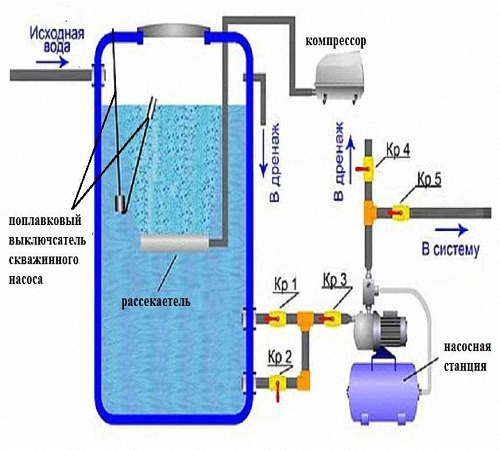
Purification of water in the well
There are three types of pollution that can be handled on their own:
- mechanical pollution;
- biological pollution;
- the presence of microorganisms and algae in the water.
Mechanical contamination occurs due to the violation of the integrity of the walls of the well, the depressurization of seams, contamination through the manhole. Understand that water is contaminated mechanically, can be understood visually.
Signs of biological contamination is an unpleasant smell, similar to sewage.
The turbidity of the water, the covering of the walls with a slippery coating, indicate the presence of microorganisms in the water.
In order to start cleaning the well, it is necessary to take a responsible and careful approach to the preparation process. There are a number of rules, the following of which is obligatory and unconditional:
- a safety rope is mandatory, regardless of the depth of the well;
- it is forbidden to work without a partner;
- it is necessary to check the absence of harmful gases in the mine well (a lit match);
- check the quality of stairs, ropes, cables.

To carry out the cleaning, it is necessary to prepare tools and plan the work plan. For the procedure, you need:
- rope-ladder;
- "Swing" - a solid board with a rope;
- buckets;
- brush for metal and sponges (for cleaning the walls);
- slings;
- mechanisms for blocking and descent;
- winch;
- means for disinfection;
- · Mortar for repairing mechanical damage to the walls.
The well can be cleaned in the following ways:
- mechanical;
- biological;
- prophylactic.
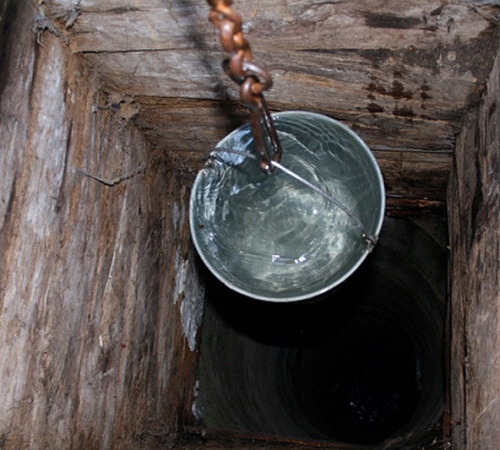
Methods of cleaning water in the well
Automatic cleaning is carried out in early spring or late summer, during the minimum level groundwater. Before starting the procedure, it is necessary to remove water from the well, drainage pumps. Garbage, sludge must be removed manually. To do this, one employee collects sludge in buckets, the second using a special device takes out the excess components up. If there are mechanical damages to the shell of the well, it is necessary to cover the cracks with a previously prepared mortar from a mixture of cement and sand.
If there are springs at the bottom of the well with clean water, it is supposed to interfere with the buoyancy. To solve the problem, a special shield and a bottom filter are prepared.
Biological cleaning follows the end of the mechanical cleaning phase. Rings of concrete are disinfected with chlorine solution with a spray or special washcloths, wait about three hours and thoroughly rinse with water. A well filled with water is not yet usable. Following the first stage proceed to the next stage of biological treatment. To disinfect water, pour out a liter of specially prepared bleach.
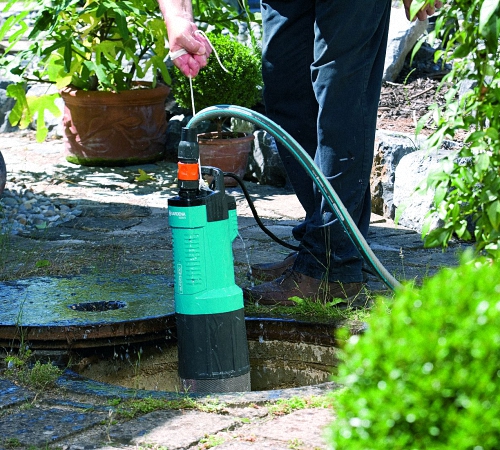
After a day, the water is pumped out again. Wait for its natural filling and conduct a water analysis. If there is a smell of chlorine, pumping water is repeated several times. As a rule, biological purification is effective and kills harmful organisms. For the cleaning of wells, it is strictly prohibited to use detergents, powder, aggressive chemicals.
Even though the water looks very clean, it can be dangerous to drink. In order to ascertain the quality of water, it is necessary to include the liquid for analysis in the sanitary epidemiological service.
Prophylactic cleaning of the well is necessary for any well, even in the absence of visible problems. Potassium permanganate will help support the "health" of the well. Twenty grams of the substance is dissolved in a bucket of water and poured into the well. After a few hours disinfected water is pumped out. After filling the well, the water is ready for use. Preventive maintenance is recommended twice a year - after a flood and before the winter season.

Water quality in the well
The level of water in the well depends on the inflow of groundwater. In soils, where sandstone predominates, the inflow of water is large enough, and in the ground where clay predominates or on loamy sites - small. The flow of water is very important. The quality of water in the wells is determined by two parameters:
- the content of E. coli per liter of water;
- concentration of grown colonies in undiluted water.
The quality of water used for drinking is established by official quality standards and is determined by the following indicators:
- turbidity;
- chromaticity;
- smell;
- taste qualities;
- reaction after clarification;
- total rigidity;
- sulfates;
- chlorides;
- dry residue;
- copper;
- manganese;
- iron;
- fluorine;
- residual aluminum;
- hexamethophosphate;
- tripolyphosphate;
- polyacrylamide;
- beryllium;
- molybdenum;
- arsenic;
- lead;
- radium;
- nitrates;
- total number of bacteria.
There are no special uniform norms for technical water, the requirements for quality are individual.
The physical properties of water, which are paid close attention:
- color - depends on the mechanical impurities of the soil;
- taste - is estimated in points according to the table, depends on the dominant chemical element;
- odor - ideally there is no smell;
- density - depends on the ratio of the mass of water to its volume;
- viscosity;
- transparency - depends on the amount of organic substances dissolved in water, impurities, minerals;
- temperature - depends on tectonic and lithological features;
- compressibility;
- electrical conductivity;
- radioactivity - depends on the presence and amount of radon and radium in it.
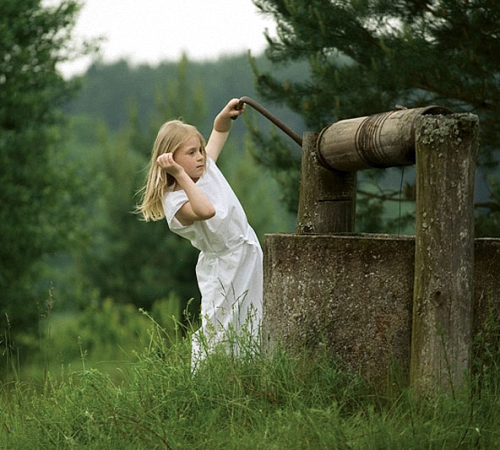
For analysis use a container, at least two liters, the bottle must be clean, from under the mineral water. Tara from under drinks can change the readings. The basic rules are as follows:
- fill the bottle to draw water to the brim, the air should not stay;
- give the water for analysis should be for a short time, no more than two hours;
- water must be delivered in a dark bag.
Filters for water in the well
Install the filter on the bottom of the well is not easy. Apparent ease of the device, in fact requires knowledge and consistency of work in the installation. There are two variants of filters:
- natural;
- artificial.
A filter is needed to improve the quality of water or at the initial stage when digging a new well. To determine whether to install filters, you need to analyze some points:
- if the bottom of the future well is solid, has broken springs, water arrives quickly and of good quality, then the installation of the bottom filter is impractical;
- if the bottom is loose, the water is turbid, there is a threat that a water filter is necessary.
There are many artificial filters for water, they differ in device, function and appearance. Taking into account the results of the water analysis, it is necessary to determine which of the filters should be purchased and installed. Based on how the water is purified, these water filters are distinguished:
- filters for mechanical cleaning from silt, sand, rust;
- filters for antibacterial cleaning;
- filters to soften hard water thanks to ion exchange technology;
- filters to reduce the amount of iron in water;
- complex filters for complex impact on water quality.
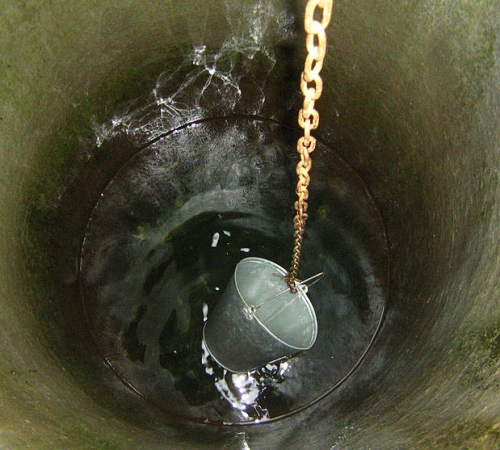
When choosing a filter, it is necessary to analyze many factors and listen to a specialist's advice. The main points when choosing and buying a filter:
- results of water analysis;
- quality of the filter;
- reputation of the manufacturer;
- period of service.
Recently, flow filter. It qualitatively cleans water of bacteria, chemical compounds, unpleasant odors, but for the qualitative work of this filter is required submersible pump with high pressure capacity.
You can opt out of the filters in favor of the water purification system. This system is more reliable than filters and allows complex influence on water. System reverse osmosis allows you to purify drinking water from metals, impurities, unpleasant odors, salts qualitatively. After this filtration, the water is completely allowed to use.
The following stages of filtration of purification systems are distinguished:
- the first - mechanical cleaning from silt, clay through mesh filters;
- the second - purification by oxidation - iron, manganese, impurities;
- the third - clarification under the influence of catalysts;
- the fourth (final) - cleaning with filters on the basis of coal - getting rid of unpleasant odors, flavors, turbidity.
To see the video, how the water purification is done correctly, can be found at the end of the article. It is devoted to the problem of drinking water purification in wells.
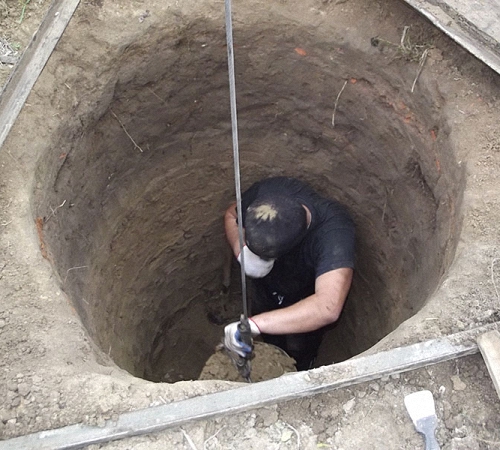
Methods for assessing the quality of water in the home
While there is no way to analyze the water from the well, one can evaluate the state of the liquid with folk recipes:
- evaluation with the help of tea - to brew tea from unfiltered well water and bottled, with a difference in color, taste, smell - cleaning is necessary;
- sedimentation of water in a dark place for two days - if a deposit or film appears on the surface of the liquid, cleaning is necessary;
- testing with a mirror - drip onto a mirror and allow to dry if the stained spots are cloudy, white or brown - cleaning of the well is necessary;
- assessment of quality with a solution of manganese - if the pink solution quickly turns brown - requires water treatment.
The old ways will help to determine the contamination of water:
- the smell of rotten eggs indicates an excess of hydrogen sulphide;
- the presence of silt is the result of vital activity in the water of sulfur bacteria;
- the presence of turbidity in the water indicates the content of clay and sand in the liquid;
- the taste of metal - glut of iron;
- bright color - glut of organic substances.
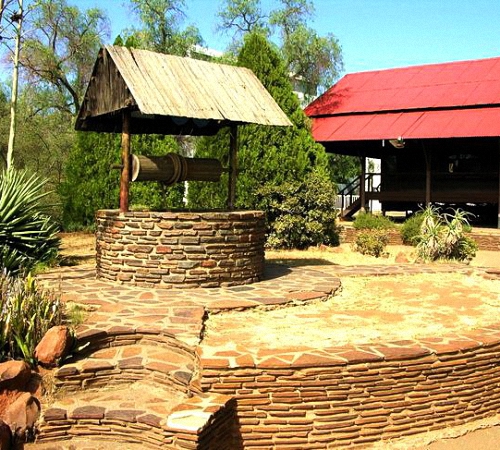
Disinfection of water in the well
The methods of water disinfection in the well are diverse and depend on various factors. Preparation for disinfection requires preparatory work:
- pump out the water;
- restore integrity concrete rings and seams;
- clean the walls.
For disinfection of the wells, special preparations with disinfecting and antibacterial properties should be used. They should be able to:
- destroy pathogens;
- do not be toxic;
- do not damage the materials of the well;
- easy to wash;
- be safe for health.
The most popular disinfectants:
- bleaching powder;
- white;
- solution of manganese;
- iodine solution;
- tablets "Aquatables";
- tablets "Ecobrys";
- tablets "Septolit".
Currently, ultrasonic and ultraviolet cleaning is gaining popularity. They are effective, safe, but they require expensive equipment. Recommendations for water purification in the well are aimed at inheriting a certain algorithm during disinfection.
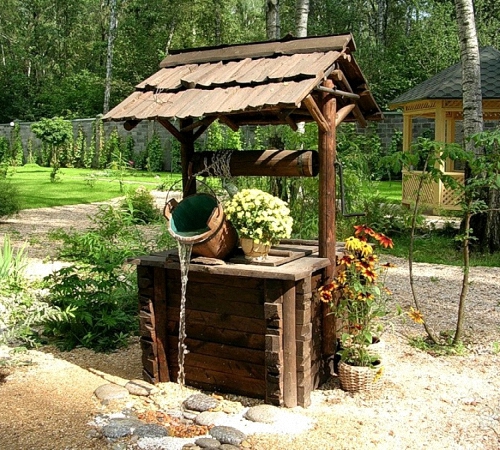
Prevention of keeping the well clean
- clay lock - will help prevent sewage from entering the well;
- cover, canopy over the well - protect from debris, precipitation, direct sunlight;
- carry out preventive cleaning of the well with a solution of manganese;
- when the ion filter is very dirty;
- clean the bottom of silt and plants;
- install complex filters.
Water - a necessary component for human life, the quality of water depends on the state of health. Pure water - something that must always be available. It is necessary to carefully monitor the cleanliness of the water used, to clean the well in time and not to save on filters.



